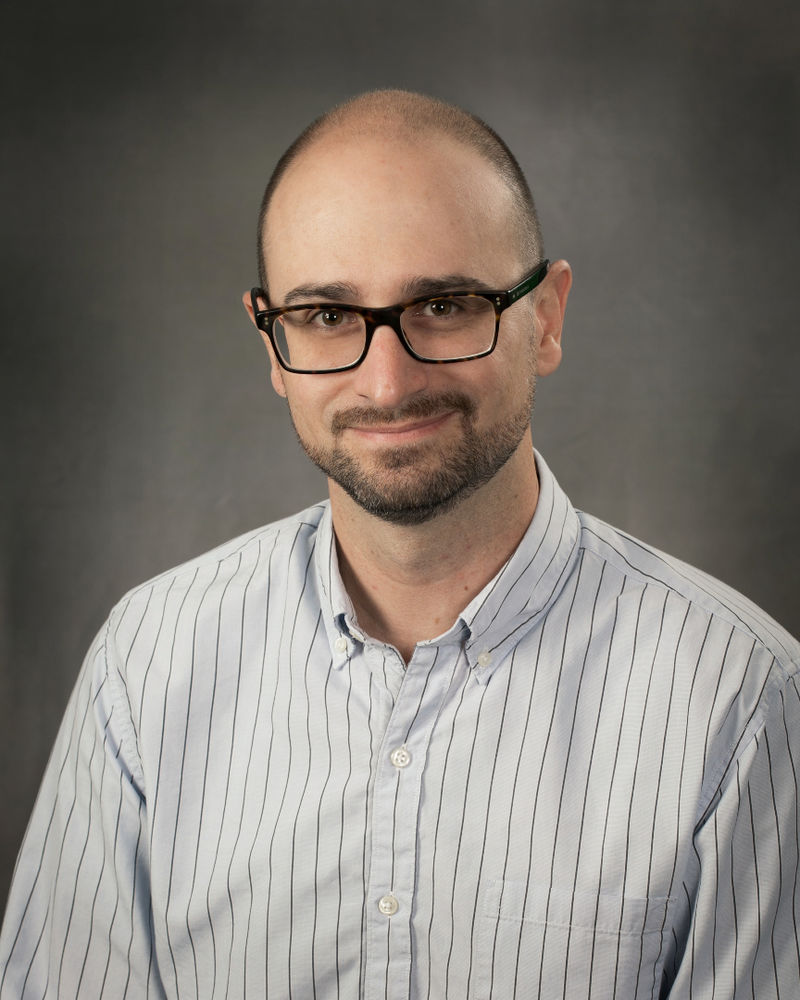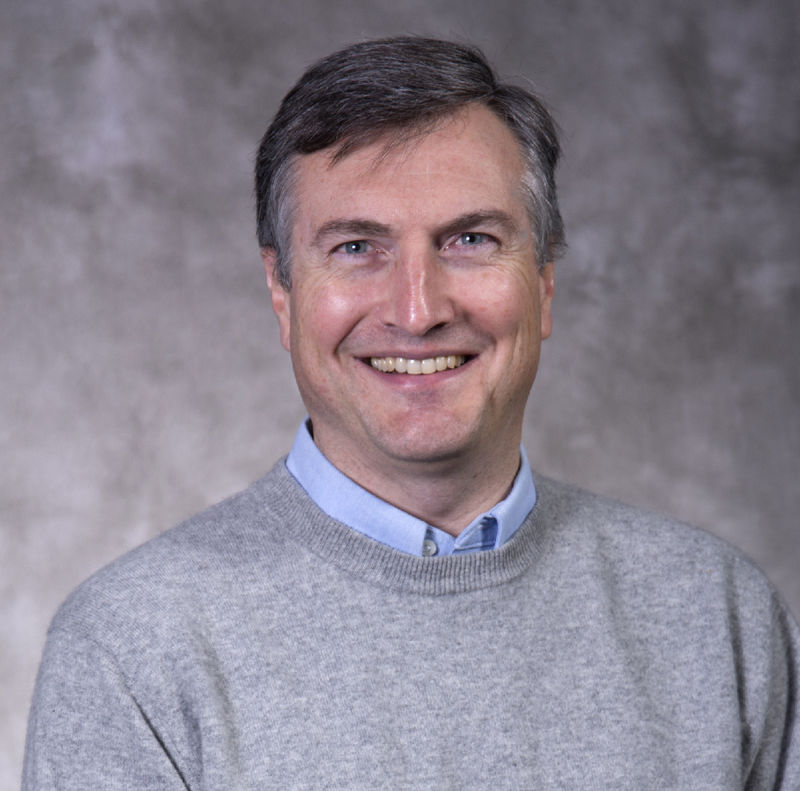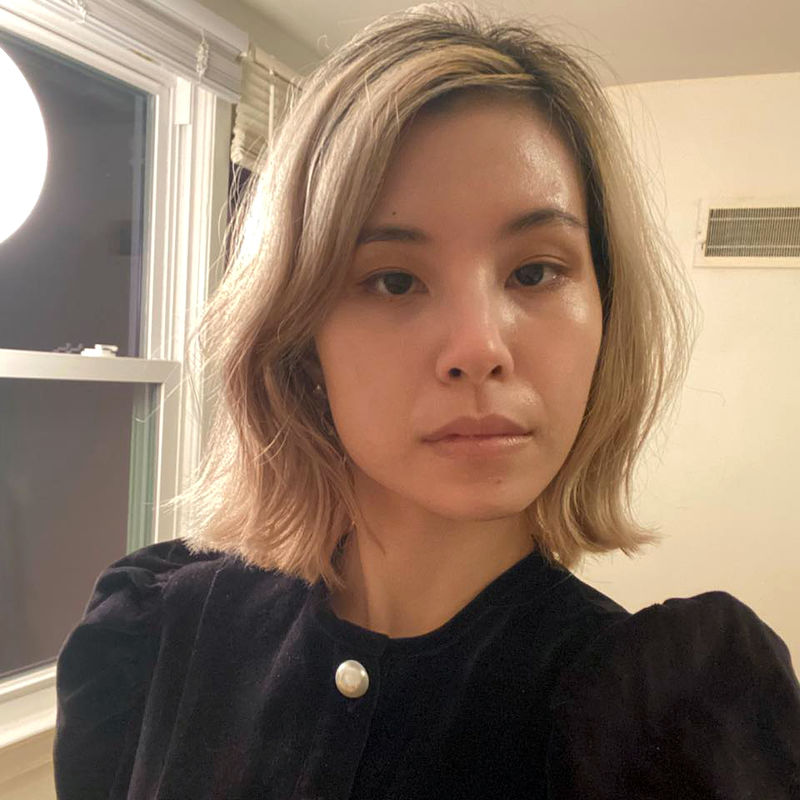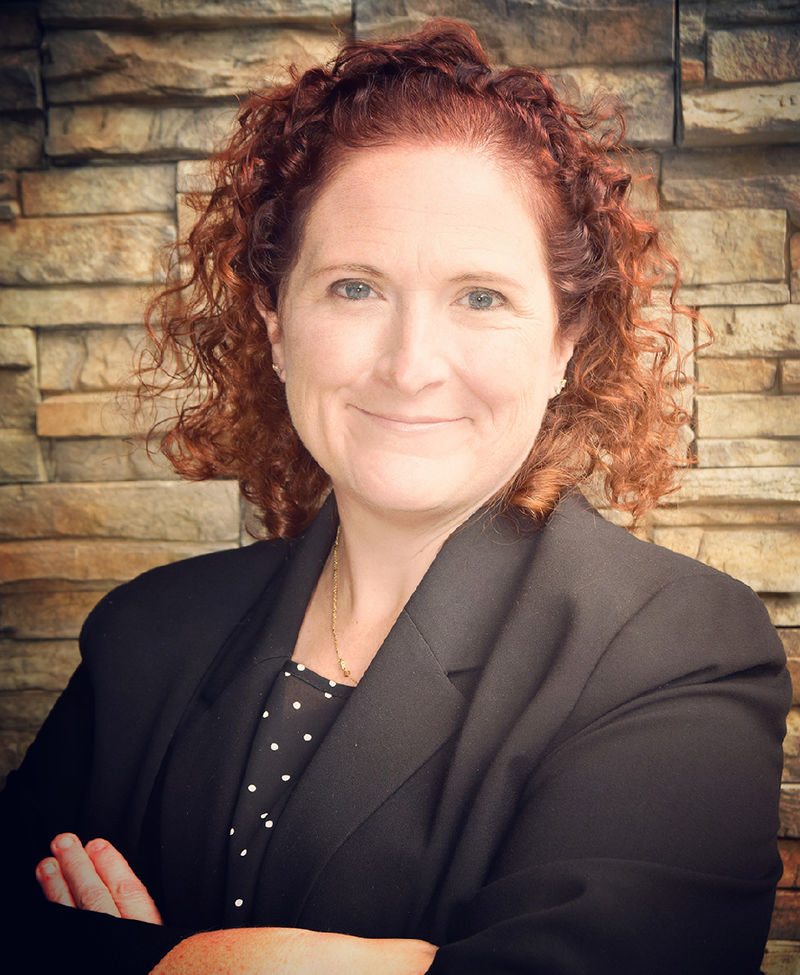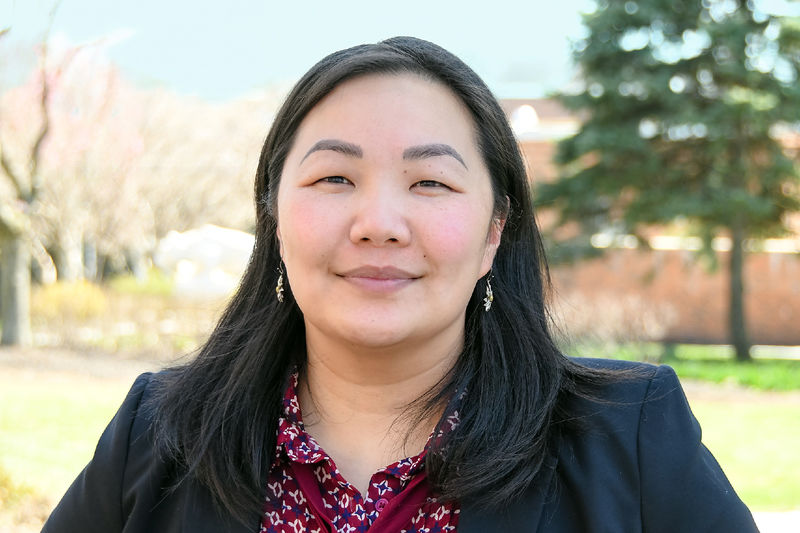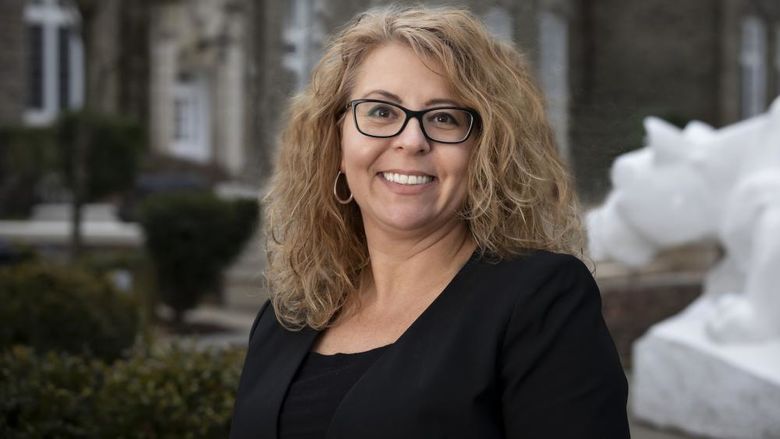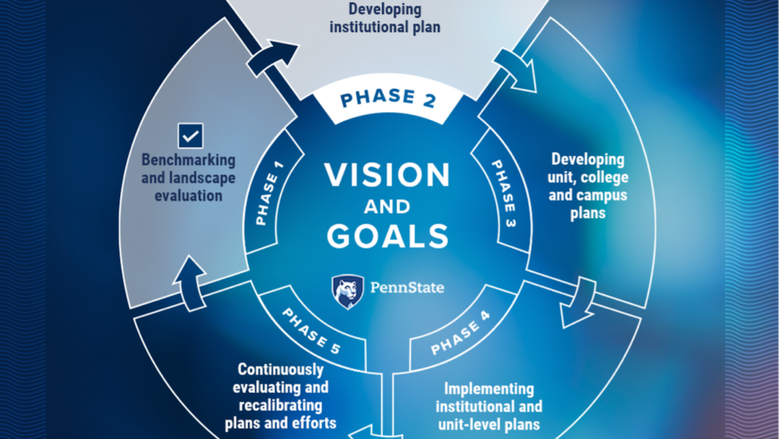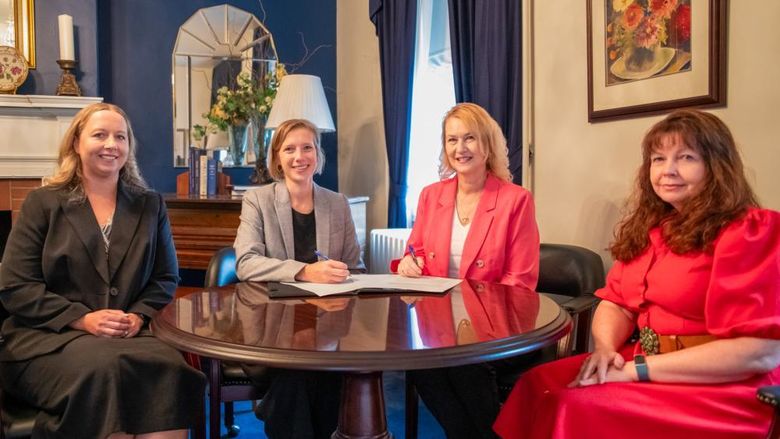UNIVERSITY PARK, Pa. — Six Penn State faculty members have received the 2023 George W. Atherton Award for Excellence in Teaching.
They are Kevin Bell, associate professor of English in the College of the Liberal Arts; Joseph Cuiffi, assistant teaching professor of electro-mechanical engineering technology at Penn State New Kensington; Peter Heaney, professor of geosciences in the College of Earth and Mineral Sciences; Desiree Lim, assistant professor of philosophy in the College of the Liberal Arts; Megan Lorenz, lecturer in business administration at Penn State York; and Brenna Traver, associate professor of biology at Penn State Schuylkill.
The award, named after Penn State’s seventh president, honors excellence in teaching at the undergraduate level.
Kevin Bell, associate professor of English
Early in Bell’s career as a graduate student, when he worked as a teaching assistant, he got a bit of sage advice from his most influential mentor. She was reflecting on why her most brilliant students sought out all her classes, and said it was because “she never taught anybody anything.” Rather, she taught them how to learn.
Her words stuck with him and still inspire his teaching style today. Like his mentor, instead of teaching students, Bell wants to think openly about the themes and imagery found in the story so that students can find their own way, on their own time, to what the author is trying to say.
“I remain astonished to see so many of my own students realize, in their own times and rhymes, that in simply trying to respond to someone else’s constant questioning and opening of different angles to complex pieces of philosophy, literature or film, that they, the students, are actually teaching themselves how to lose whatever need they may have once had for predetermined points of moralistic, either/or judgments and positions and how to discern some of the ways that explorative literature and film induce us to grasp more sensitively the differences our experiences of the world,” Bell said.
Bell said he wants his students to realize that, in order to understand the text and defend their positions on it, they have to be drawn to the hours of required reading, listening and preparation. With that approach, Bell’s students realize that understanding requires a passion for understanding the art, he said.
“They begin to realize that any true study of art is infinite,” Bell said. “I have never stopped trying to guide them all to guide me back to the point of such self-discovery, through sustained immersion in a few ideas and images made endlessly available by any of the classroom texts and films.”
Bell said he can’t expect his students to take the notion of critical study seriously unless they know how seriously he takes it. He tries to communicate his enthusiasm for the work and encourages them to do the same. This leads to engaging classroom discussions where students take interpretive risks in their own written or verbal responses to the texts.
“It’s an involvement that leads to each student to try to contribute something that hasn’t been heard or even perhaps thought, an involvement that requires each student to be idiosyncratically informed by the tonalities and textures of our art object,” Bell said. “These class discussions see students forming their own senses of how deeply implicated they personally are in any narrative we read or film we view, beyond the question of whether or not they ‘like’ the piece.”
Students said Bell is always pushing for their voices to be heard and encouraging them to take risks.
“No matter the course, a fruitful experience with Bell is guaranteed,” a student said. “He pushes his students to look at the finer details; a couple sentences taken from a piece of lengthy literature holds so much power. Dissecting the meaning of a comma, exclamation point, or prepositional phrase can turn into a successful essay about a book’s overall message.”
Joseph Cuiffi, assistant teaching professor of electro-mechanical engineering technology
Cuiffi said his students arrive thinking engineering is simply the process of learning specific tools and knowledge to perform specific tasks, but, by the time they leave, they learn it is much more than that. He said education is about gaining confidence and skills needed for problem-solving.
His teaching style centers around two concepts: clarity and respect.
Clarity goes two ways, he said. He needs to be clear when delivering lessons or designing assignments or else his students will grow frustrated. He also needs clarity in defining student expectations.
Cuiffi begins by teaching his students the basics, such as how to use a calculator and other tools to work through engineering problems. He also teaches them common engineering terminology and techniques so that they can adopt best practices early on.
His assignments also assume real-world expectations. Students don’t just turn in work and receive a grade: It’s a process of revising and fine-tuning, he explained. One class that assigns a term research project is a great example of that fluid process.
“The EET 212W term research project, which has them choose and investigate a topic and parse a peer-reviewed article, is often initially overwhelming, but simply providing a clear approach and tailored guidance along the way helps students to get started and gain confidence,” Cuiffi said. “I am always surprised by the quality of the final presentation and paper for this assignment, and I think it has been one of my most successful attempts at pushing students toward the continual learning mindset.”
Respect also is important, said Cuiffi. His students are each dealing with unique experiences in college and he’s understanding of those difficulties.
“Our students come from a variety of socioeconomic backgrounds, but they are often very pragmatic and driven,” Cuiffi said. “It is important for me to develop a rapport with my students early on so that they see the learning environment as a conversation and something they control. Once they see that I will truly answer their questions, take suggestions, and adapt to their personal emergencies without judgment and respect, which is not always easy, it helps with their confidence.”
Cuiffi sees time with his students — whether it be in the classroom, lab or office hours — as a chance to see how his students are learning, and areas where they need a stronger foundation, he said. He wants his students to understand the concepts but also see the big picture about how these lessons will play out in their careers.
“There are many approaches to teaching and learning activities, and I have enjoyed trying a variety of techniques and developing my personal style to help students on their path,” Cuiffi said. “These ideals of clarity and respect are not specific techniques, but for me they are guiding principles for my approach and attitude.”
Students said Cuiffi is passionate about the subjects he teaches and is always willing to go above and beyond for his students, both inside and outside the classroom. One student said Cuiffi even created a schedule guide to help students take courses in the most logical progression while also graduating on time.
“Dr. Cuiffi is one of those teachers that you could never forget. He is quirky, funny, and has a passion for learning that is simply infectious,” a student said. “He is actively engaged with his class inside and outside of the classroom, and it is clear that he cares about his students. The love that he has for the classes he teaches is apparent.”
Peter Heaney, professor of geosciences
As an undergraduate student, Heaney roomed with four physics majors and realized quickly he was not like the others. While their brains keyed in on abstract concepts, he said, he found himself clamoring for the backstory. He didn’t just want to know the science; he wanted to know the history of the science and how scientists achieved their understanding.
Four decades later, that still drives his lessons, said Heaney.
For example, in a lesson on Bragg’s Law of Diffraction, which deals with the scattering of X-rays from a crystal, Heaney doesn’t just teach about the concept. Instead, he said, he teaches the competing notions regarding atoms as German and English scientists raced in 1912 toward discovery at the onset of World War I.
“The wrong turns into blind alleys are things you never read about in physics textbooks,” Heaney said. “This approach takes more time but it contextualizes complex ideas for students and it humanizes the scientific process.”
Heaney, who often teaches courses to non-science majors, believes in active learning and active teaching. He said he embraces the challenge of making large-enrollment courses fun and engaging. His general education course on gemology is packed with hands-on exercises that let students discover for themselves complex topics like the interaction between light and crystals.
“In my mineralogy class, I love to present conundrums to students such as ‘Is a snowflake a mineral?’ and briefly leave the room as debate ensues,” Heaney said. “The question always splits the class, and the answer is ‘Yes.’”
Heaney creates an environment where students are encouraged to ask questions. It helps them learn and it guides him as to whether they’re grasping the concepts.
“I have evolved to where the questions drive the lessons,” Heaney said. “In addition to keeping the students continuously involved, constant querying communicates the essential nature of science, that nothing is assumed and every advance is achieved through an unceasing sequence of logical questions.”
Nominators said Heaney is an academic juggernaut whose work on gemstones and minerals is frequently cited among researchers. He’s sought after for his work in mineralogy and geochemistry. But in addition to his crystallographic expertise, he has a gift for making these topics accessible to all.
“The differentiator for Dr. Heaney is his awareness and ability to teach to each of his students’ knowledge bases, catering to both novices and solid-state chemists,” a nominator said.
Former students praised Heaney’s approaches for learning through engagement and visualization. For one geoscience course on mineralogy, Heaney used a connection with the curator of gems and minerals at the Smithsonian Institution to arrange a behind-the-scenes tour of the world’s most precious gems.
“It’s one thing for a student to be able to sit through and memorize a dense, 50-minute lecture on carbon-carbon bonds in diamonds,” the former student said. “It’s another thing entirely to be able to observe and internalize these bonds by seeing up close the priceless Hope Diamond.”
Desiree Lim, assistant professor of philosophy
Lim strives to make her classroom a welcoming environment where students are able to speak freely while being challenged to think more deeply in their beliefs. She said that’s particularly important in social and political philosophy courses, where views can, at times, be polarized or sensitive.
“I believe that for such classes to be effective, students must feel comfortable enough to express their sincerely held views and ask questions without worrying they will be judged or shouted down,” Lim said. “I stress that differences in opinion are not a cause for conflict or tension; instead they are necessary for joint reasoning and deliberation. That said, I have also cultivated a great sensitivity to how power dynamics play out in the classroom and am keenly aware of how some differences of opinion can land very differently for students from historically marginalized groups.”
Lim said her role isn’t to tell students what to think but rather to show them how to think. About a third of her class time is spent covering the course material and learning the key concepts. From there, students are expected to build on these through dialogue and debate.
“This ensures everyone has a good grasp of the philosophical debate before I ask them more complex questions,” Lim said. “After that, I prefer to let the students set the tone of the discussion, and I encourage them to respond to each other, rather than to me.”
So that her students can further articulate themselves, it’s imperative to help them become better writers, she said. She does this using a detailed template for writing a good philosophy paper, which she calls “Anatomy of an Essay.”
Students learn to craft cohesive introductions, bodies and conclusions. Next, those essays are challenged in a two-week writing workshop where students work with her before being challenged further by their classmates.
“While these sessions are student-led, I play the role of moderator while also offering my own detailed comments,” Lim said. “This practice has also made my students more at ease with sharing their work and understanding the value of constructive criticism.”
Students praised Lim’s ability to cover complex topics often sourced from historical reading material from the likes of John Locke, W.E.B. Du Bois and John Rawls, with a conversational tone and deep understanding of the text. They said she is a talented educator who also prompts spirited and effective dialog.
“Dr. Lim’s classes felt more like a focused discussion among acquaintances and friends, although few students knew each other,” a student said. “Dr. Lim embodies everything a student would want in a great philosophy professor — or any professor — for that matter.”
Megan Lorenz, lecturer in business administration
Lorenz believes the most valuable skill anyone can possess is the ability to be a leader, and that’s a goal she strives to teach her students.
“I don’t believe leaders are born; they are made,” Lorenz said. “For students to learn how to be great leaders through an academic experience they must be engaged to learn, work on diverse teams, and develop confidence in their abilities by applying their learning.”
Lorenz said teaching is much like being a leader in industry: Just like you need to know your employees, you need to know your students to help them succeed. Her interactions focus on education but also earning their trust and respect.
She’s always looking for ways to engage with her students in and out of the classroom. She’s visible on campus and advises various related clubs, including the York chapter of Future Business Leaders of America (FBLA) Phi Beta Lambda (PBL).
One student said they originally had little interest in competing in PBL but did so at Lorenz’ nudging. They went on to excel at the national level — adding to the more than 200 national awards Lorenz’s students secured in competition — and found a sense of confidence in the process that led to success.
“In my time as a student, I had the privilege of growing under her, going from a mediocre student to a multi-time national award recipient and confident businessperson,” the former student said. “She’s an incredible mentor, teacher and, above all else, role model. To summarize, she is the blueprint, and I would not be who I am, or where I am, without her.”
Lorenz said, “I’m always stopping to converse with students. It's through the knowledge and relationships I develop with my students that enables me to frame my lectures and application of the material so it is more interesting, engaging and meaningful to them.”
Lorenz said she knows her students won’t need to just learn the course material, they’ll need to learn how to apply it in their careers. She often incorporates real-world examples from her own work experiences, and uses project-based learning so students can bridge classroom discussion with real-world business projects.
In one of her finance courses, she tasks students with conducting a five-year financial analysis of a company while also providing solutions to financial issues they unearth. Later, students have 15 minutes to analyze a financial decision the company made while doing calculations to assess that decision. That’s followed by a presentation where the students defend their analysis and recommendations.
“Through this experience, students apply their learning and critically think ‘on their feet,’ learning to lead themselves and their groups through making decisions,” Lorenz said.
Lorenz also pairs her students in groups for a series of corporate leadership simulations. Students learn to work in teams and develop better management and leadership strategies as they navigate solving problems in diverse groups with varied opinions.
“By teaching my students to be leaders, they have learned far more than the business content of my courses, but how to navigate this rapidly changing economic environment, be confident in their abilities, apply their learning while working in diverse teams, and, in turn, achieve success,” Lorenz said.
Brenna Traver, associate professor of biology
Traver believes if you’re not passionate about what you teach, your students won’t be, either. She said she's passionate about biology and teaching, and her students feed on that enthusiasm. If her students are excited about the subject matter, she said, they’re more likely to retain it.
“Students value teachers who are passionate about the subject matter and with whom they can easily connect and build rapport,” Traver said. “Students also appreciate instructors who are professional yet approachable as this leads to a more relaxed learning environment and increases student participation and engagement.”
Her classroom presentations are lively and tailored to accommodate a range of learners. She’s always looking for ways to introduce topics that they can relate to and know why it’s relevant, she said. Her thoughtfully designed, streamlined lectures are met with auditory, visual and tactile delivery to accommodate different learning styles. She also mandates note-taking, something she said she found keeps students focused and engaged. She finds that it improves classroom participation and discussions.
She also has her students draw what they’re learning. That’s a chance for them to visualize these hidden biological functions, she said. It’s also a chance for her to reassess and know the key points her students are grasping or struggling with.
“These activities allow me and the students to obtain real-time feedback on aspects of the material that may have been challenging,” Traver said. “Boardwork also gives me feedback on the personalities and learning styles of each student based on how they approach the question.”
After all, Traver said she is learning, too. Each lesson is a chance for her to improve her approach. She said she takes feedback and constructive criticism to heart and is always looking to grow. She uses things like anonymous student feedback to guide her teaching style and also isn’t afraid to experiment with concepts like a “flipped classroom.”
“My teaching is a journey where I always re-evaluate how to deliver content to be as effective, inclusive and engaging as possible while recognizing the diversity of students in my classroom,” Traver said.
Students praised Traver’s enthusiasm, teaching style and advising. They said she cares about their education and even keeps a spreadsheet on each student’s progress so she can help them graduate on time.
“Dr. Traver made a meaningful impact on my education,” a former student said. “Her knowledge, passion and enthusiasm for learning created an environment destined for success. Each session was inviting and an excellent learning opportunity. Dr. Traver was not only an educator, she was a leader, mentor, role model, and now, most importantly, a fellow colleague.”
